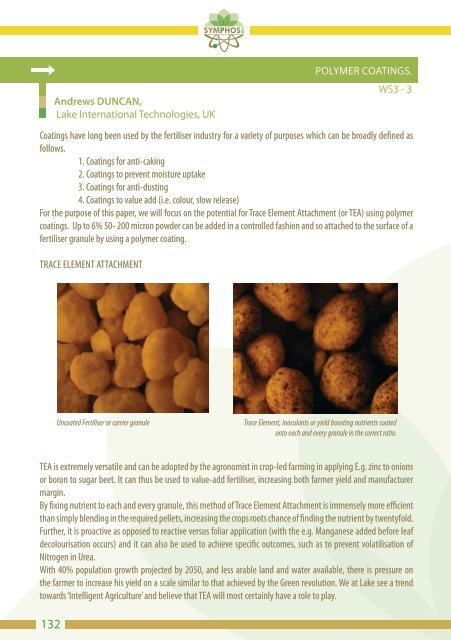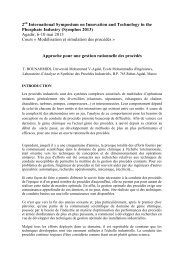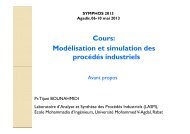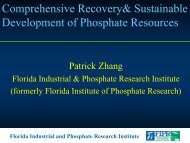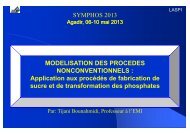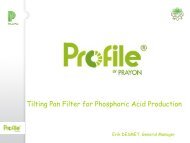Abstract SYMPHOS 2011
Abstract SYMPHOS 2011
Abstract SYMPHOS 2011
You also want an ePaper? Increase the reach of your titles
YUMPU automatically turns print PDFs into web optimized ePapers that Google loves.
132<br />
Andrews DUNCAN,<br />
Lake International Technologies, UK<br />
Coatings have long been used by the fertiliser industry for a variety of purposes which can be broadly defined as<br />
follows.<br />
1. Coatings for anti-caking<br />
2. Coatings to prevent moisture uptake<br />
3. Coatings for anti-dusting<br />
4. Coatings to value add (i.e. colour, slow release)<br />
For the purpose of this paper, we will focus on the potential for Trace Element Attachment (or TEA) using polymer<br />
coatings. Up to 6% 50- 200 micron powder can be added in a controlled fashion and so attached to the surface of a<br />
fertiliser granule by using a polymer coating.<br />
TRACE ELEMENT ATTACHMENT<br />
Uncoated Fertiliser or carrier granule<br />
POLYMER COATINGS.<br />
WS3 - 3<br />
Trace Element, inoculants or yield boosting nutrients coated<br />
onto each and every granule in the correct ratio.<br />
TEA is extremely versatile and can be adopted by the agronomist in crop-led farming in applying E.g. zinc to onions<br />
or boron to sugar beet. It can thus be used to value-add fertiliser, increasing both farmer yield and manufacturer<br />
margin.<br />
By fixing nutrient to each and every granule, this method of Trace Element Attachment is immensely more efficient<br />
than simply blending in the required pellets, increasing the crops roots chance of finding the nutrient by twentyfold.<br />
Further, it is proactive as opposed to reactive versus foliar application (with the e.g. Manganese added before leaf<br />
decolourisation occurs) and it can also be used to achieve specific outcomes, such as to prevent volatilisation of<br />
Nitrogen in Urea.<br />
With 40% population growth projected by 2050, and less arable land and water available, there is pressure on<br />
the farmer to increase his yield on a scale similar to that achieved by the Green revolution. We at Lake see a trend<br />
towards ‘Intelligent Agriculture’ and believe that TEA will most certainly have a role to play.


